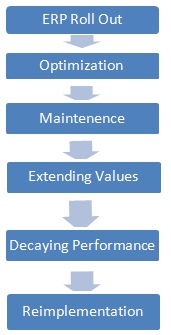Cost Estimate and Accounting in ERP
February 12, 2025
 Is a Pollution Tax Worth it ?
Is a Pollution Tax Worth it ?
Washington DC has seen several proposals for strange regulations. The latest one of these suggestions is a pollution tax. Many people believe that levying a tax may be the solution to eradicating the problem of climate change gradually. The world in general and Washington DC, in particular, wants to get rid of high levels of […]
 Sourcing Strategies and Procurement Processes
Sourcing Strategies and Procurement Processes
Not long ago, purchase function was seen to be a desk job, monotonous paper work, dull and passive and more of an administrative function. The purchase managements were the fall guys whose only aim was to keep feeding shop floor and avoiding stock out situation. Today the situation has changed totally. Procurement function is considered […]
 The End of the Indian IT Sector
The End of the Indian IT Sector
The Indian IT sector has been facing a lot of flak. The industry is undergoing a transformation. Issues like the availability of H1B visas and adapting to changing technology are at the forefront. The stocks of Indian IT behemoths have taken a beating. Employees are being laid off indiscriminately. All this signals towards the fact […]
 The Pitfalls of the Canadian Healthcare System
The Pitfalls of the Canadian Healthcare System
The Canadian healthcare system was known to be the best amongst all the developing countries in the world. This is because it provided its citizens with the advantages of universal health care. The Canadians have always taken pride in the fact that their government considers healthcare to be a fundamental human right and is willing […]
 The Singapore Growth Model
The Singapore Growth Model
Singapore has been one of the great success stories of South East Asia. The country started with very little money or resources just a few decades ago and had built one of the best global cities today. Their success story is not similar to that of China or Hong Kong. The differences are remarkable. The […]
Initial investment in acquiring and implementing an ERP system is substantial in terms of both human efforts and financial resources. After, successful implementation, the system goes to maintenance mode and organizations start getting value out of their investment.
After a prolonged period, due to changes in business and technological paradigm, it becomes more and more difficult and expensive to maintain and extend the system. The process of reimplementation and beginning of a new cycle starts.
ERP life cycles, which encompass entire 10 to 20 years of effective operating life, are often confused with ERP Implementation Life Cycle. Some of the phases of ERP life cycle is shown in following diagram.

Maintenance will be covered by service level agreement, entailing payment of license fee to the vendor. For a complicated system, there may be a third party vendor, helping maintenance at site. The license fee, due to provision of escalation, gets escalated at regular intervals and after some years, adversely effects Total Cost of Ownership (TCO).
Parallel to business changes, technological changes also occur. New release and versions appear for underlaying technologiocal platforms like Operating System and Data Base. ERP vendors release patches and versions of their producdts at regular intervals which needed to be incorporated in the existing system. This usually involves minor or modeate efforts. But, problem arises where many softwae objects were customized during implementation. Retrofitting these objects for making them compatiable with later versions, may turn out to be a major migration exercise involving exorbitant cost and effort.
Your email address will not be published. Required fields are marked *